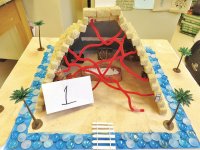Creating a Student-Run Museum in Your Classroom
Letting students establish a museum exhibit with everyday items offers an opportunity to sharpen their storytelling skills.
Your content has been saved!
Go to My Saved Content.The standard school field trip often includes an outing to a museum, but a new resource provides guidance on how to bring a museum into the classroom. As part of the Mobile Museum Project, the Royal Holloway, University of London, and the Kew Royal Botanic Gardens teamed up to create a . The project, which can be used for any age group, turns the premise of a museum on its head: “The primary aim of object-based learning should be to learn from rather than about �Dz���ٲ�.”
Asking questions such as, “What do you want people to learn and why?” and “Who are you hoping to attract and why?” helps students formulate the purpose of their exhibit. Collecting the objects for the museum is a learning process in and of itself: “culturally significant” objects, such as an item passed down through a family or an item from a student’s home country, can prompt storytelling and help students build a sense of historical understanding and empathy. Make sure students document important information about each item; the curriculum suggests recording at least “the date it was collected, where it came from, and a brief description of the object.”
Once gathered, students can practice thematic grouping by sorting the items into different categories, “scientific, thematic, or geographic,” before organizing the collection for final display. Students might be asked to create an illustrative series to show the relationship between items. For example, a display description might trace the evolution of an object: “Cotton boll to spun cotton thread to t-shirt.” Designing and writing labels provides another way to incorporate storytelling into the curation process.
Promoting and launching the student-created museum is fun and a great opportunity for parent and community engagement: “Museums often ‘launch’ their exhibitions by holding a special event (sometimes referred to as a ‘private view’) to which they invite various stakeholders and the media.” Encourage students to think about ways visitors might interact with the exhibits. “Resist the temptation to have a series of speeches,” the handbook cautions. “There are other ways of creating a sense of inclusion and you don’t want to slow down the momentum of your event.”
After the project’s completion, be sure to solicit feedback. Did students learn new things from the items? Students can collaborate to explore “what worked and what didn’t work, and what might be done differently next time.” Reflecting on the successes and failures of the project gives students an opportunity to critically assess their own work.
The museum concept is a broad framework that can be used—and modified— to integrate different subjects.
